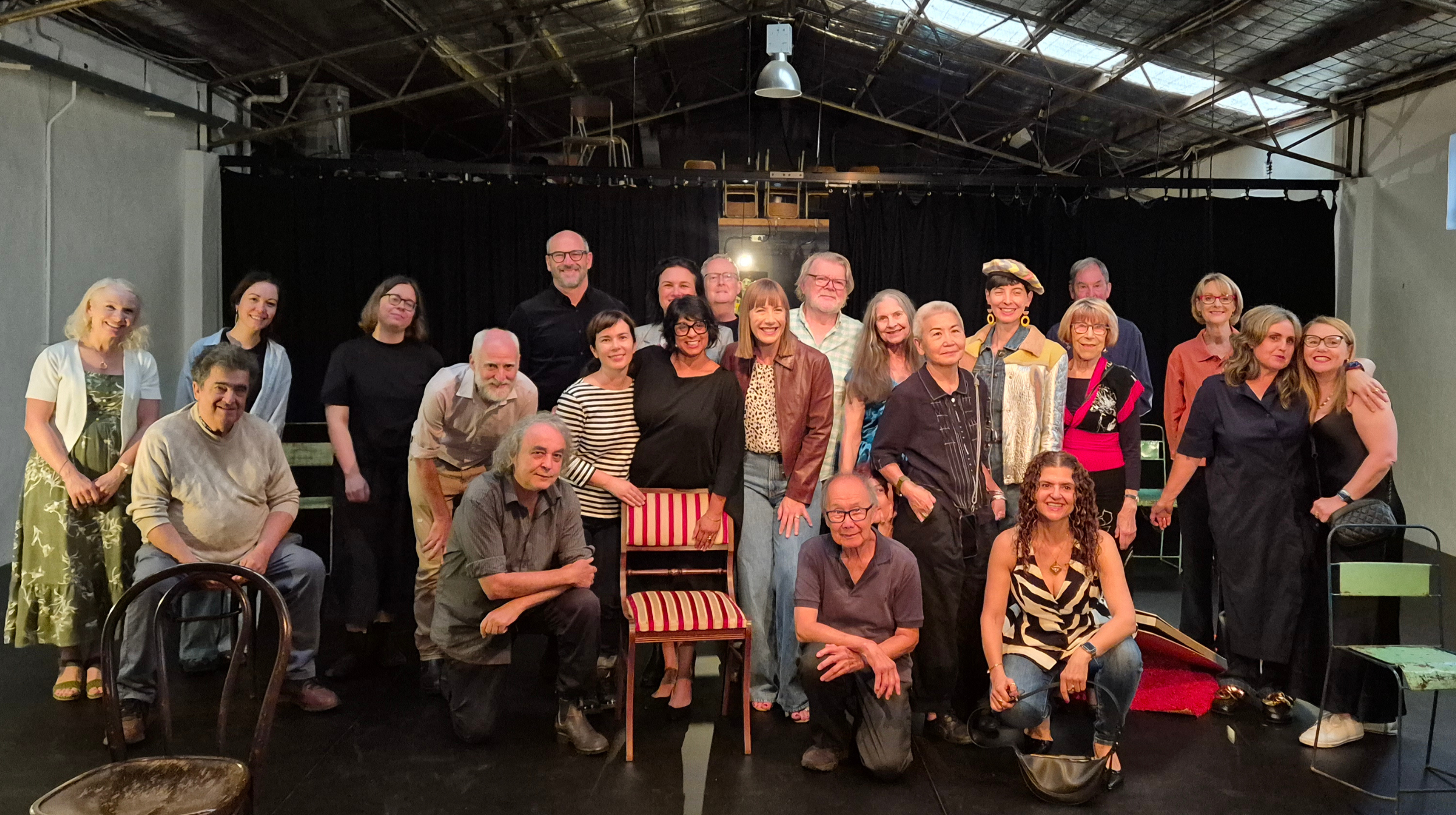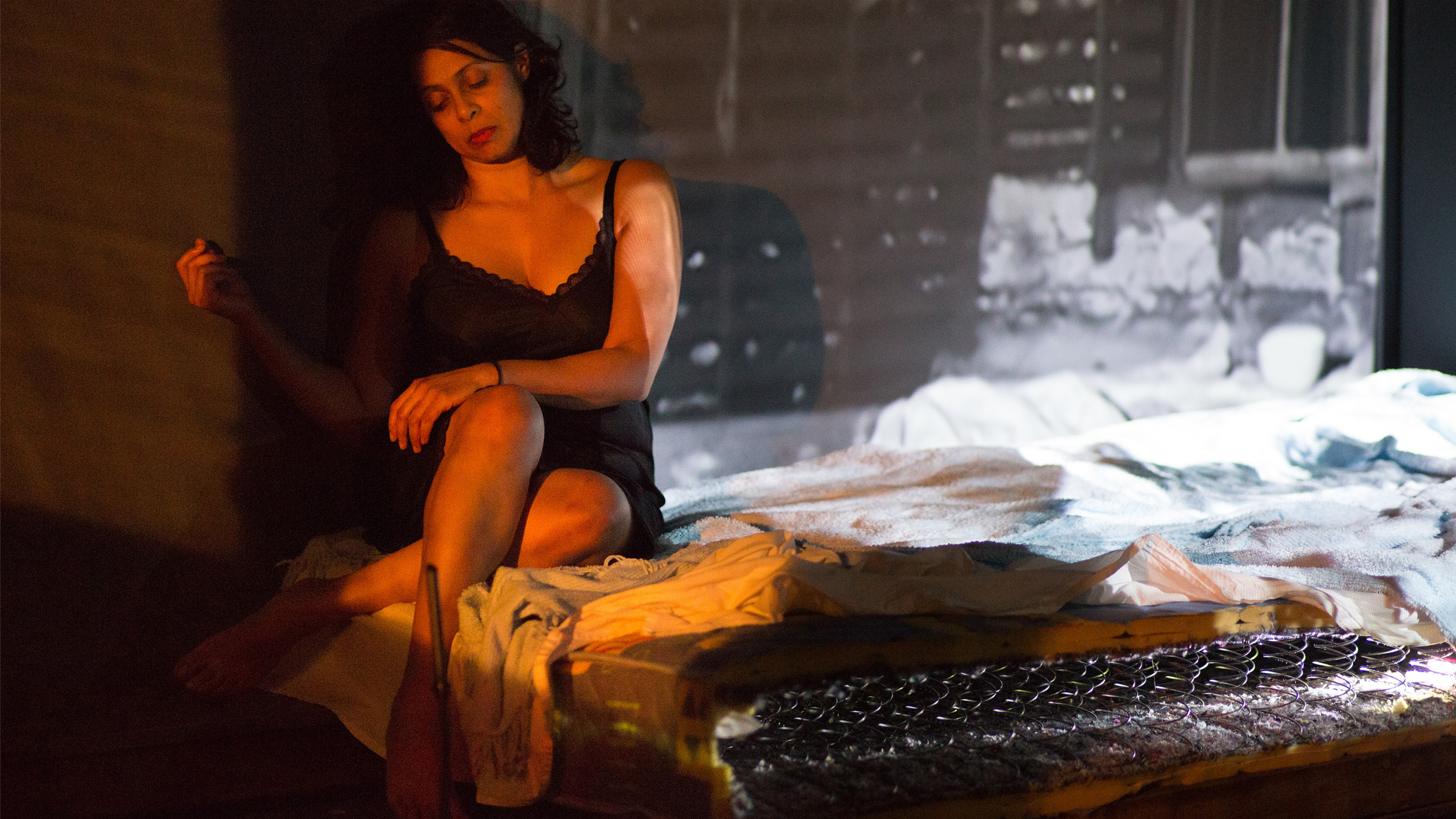
Re-scripting Trauma in Contemporary Theatre
23.08.2023
LRT’s Michelle St Anne shares how processes of ‘re-scripting’ Autobiographical Memory and Trauma Memory have informed her latest work in development Enter Sally Stage Right.
Showing up to that empty space with curiosity and courage is an exercise in the greatest freedom we can know – intellectual freedom, to explore your obsession with something nobody but you cares about, to pursue your own strange thoughts and dreams, to climb right inside your own dark wormhole of fascination and stay there.
Charlotte Wood, The Luminous Solution
And this is exactly how I approached the seeding of ‘Enter Sally Stage Right’. I began with a broad concept of re-scripting traumatic memories, a drum kit, a typewriter and free vocal improvisation based on my own memories of a nine-year-old. To assist this careful negotiation of vulnerability and authenticity, I drew two columns between types of memories.
Autobiographical memory and Trauma Memory.
Autographical memories are far more verbal. They tend to be coherent, narrative-driven and a sense of being in the past with less emotional attachment. So when recounting an autobiographical memory, there is much more of a sense of “I’m remembering it”, rather than re-experiencing or reliving it.
‘Enter Sally Stage Right’ straddles the two spheres where we find ourselves in a place of discovery where the body is split between emotional, factual and insightful selves meted out through sonic times. A typewriter for the factual, drum for the emotion and voice as insight.
The framework of ‘Enter Sally Stage Right’ uses the psychological method of imagery re-scripting[1] to shift the recall of memory by exploring rhythm, noise, and image. I pondered on the difference between the trauma and autobiographical memories, which most present to me at the time was that trauma memories still have the emotions attached to them. They also seem to have much less of a time code so when they are activated, they often feel like they are happening now, making trauma memories much more present.
Trauma memories are less integrated into other memories. They are elevated in their sensory nature and much less verbal. Trauma memories are intrusive, emotionally layered and sensory snapshots that don’t necessarily have a clear timecode or narrative. For me, they appear like polaroids that float at the right side of my eyeline, niggle and adapt sensorially, depending on where I am and what I am experiencing.
As I reflect on my body of work, I can see how much this kind of time code – less coherent, episodic – has created the worlds that my audience inhabit. A war zone of my childhood, bleak and quiet, still, perfectly still, as the intrusions of colours and shapes of another’s world revealed itself as my legs were being parted. These shapes and colours build layers of comforting images where I found myself alone and frightened. Separating from oneself when what was happening in the room becomes too much to bear. Often my gaze would focus away from the beatings, pumping and exasperated breath into the quietness of a curtain blowing, or the way light seeped into the room. Decorations took on a calming effect, and the scents and sounds that have floated from other rooms and floors sat in my memory more than the act of violence itself.
My solo work Billie is a perfect example of the meting out of a narrative to create meaning. Built from the compositional structures of Steve Reich’s phasing, I used returning images slightly augmented as a way of sensing traumatic memory and a fleeting but repetitive timestamp. My worlds play against narrative time, with meaning created through the way the light might fall.
‘Enter Sally Stage Right’ provides a space where the acts of being factual, emotion and insight are explored within trauma time, where the audience experiences the content and nature of the memories – as here and now with all the emotion attached.
Typically when they do get activated we will often try to block them and what happens when you try and block them and suppress them or distract ourselves from them is that we don’t do the emotional processing that allows us to become like the other sorts of autobiographical memories.
Whilst cultivating improvisational material for the experimental lab of LIVEWORKS I chose to explore these ‘sides’ through the placement of the drum kit, improvised with the body, a typewriter and voice to re-script memory in real-time with the audience. The sum of which creates the narrative co-authored by the receivers’ own histories, their own fleeting timestamps. Meaning is made by how we remember and what we choose to remember.
The language came from memories uncovered through re-scripting sessions with my psychologist who I have chosen to call “Sally” because it aptly describes her strength and agility to work within this space. These threads are merged with whatever presents in real time given architectures, temperature, nerves and energies floating in place.
By presenting trauma time artistically, I am examining, in real time, my audience’s ability to stay with me inside that memory in the way “Sally” does in my sessions. To abandon, look away or distract. In doing so, I am stretching our ability to stay with discomfort, so we come to understanding our own levels of denial and observation.
This work attempts to do that in a collective space to form a pathway to discovering how we are and why. I am fascinated with our levels of denial when it comes to trauma, and so through this improvisation, we ask the audience to witness the discomfort of female trauma; to be a part of new understandings for the way memory, meaning and relationships are scripted into our bodies through sound, movement and time. In doing so we build a care model into the fabric of society where we do not fear triggers but embrace them as real and valid emotions and move away from stupefied convenient amnesia.
[1] Imagery Rescripting (ImRS) is a form of therapy created by American psychologist Jeffrey Young (the creator of Schema Therapy). ImRS is designed to gain access to and do work with the subconscious.
Michelle St Anne is the Artistic Director of The Living Room Theatre. Her work is deeply symbolic, responding to site-specific architectures, audience movement, and embodied participation through lighting, smell, sound, and temperature shifting the way audiences perceive critical issues of our time.
Edited by Anastasia Mortimer


